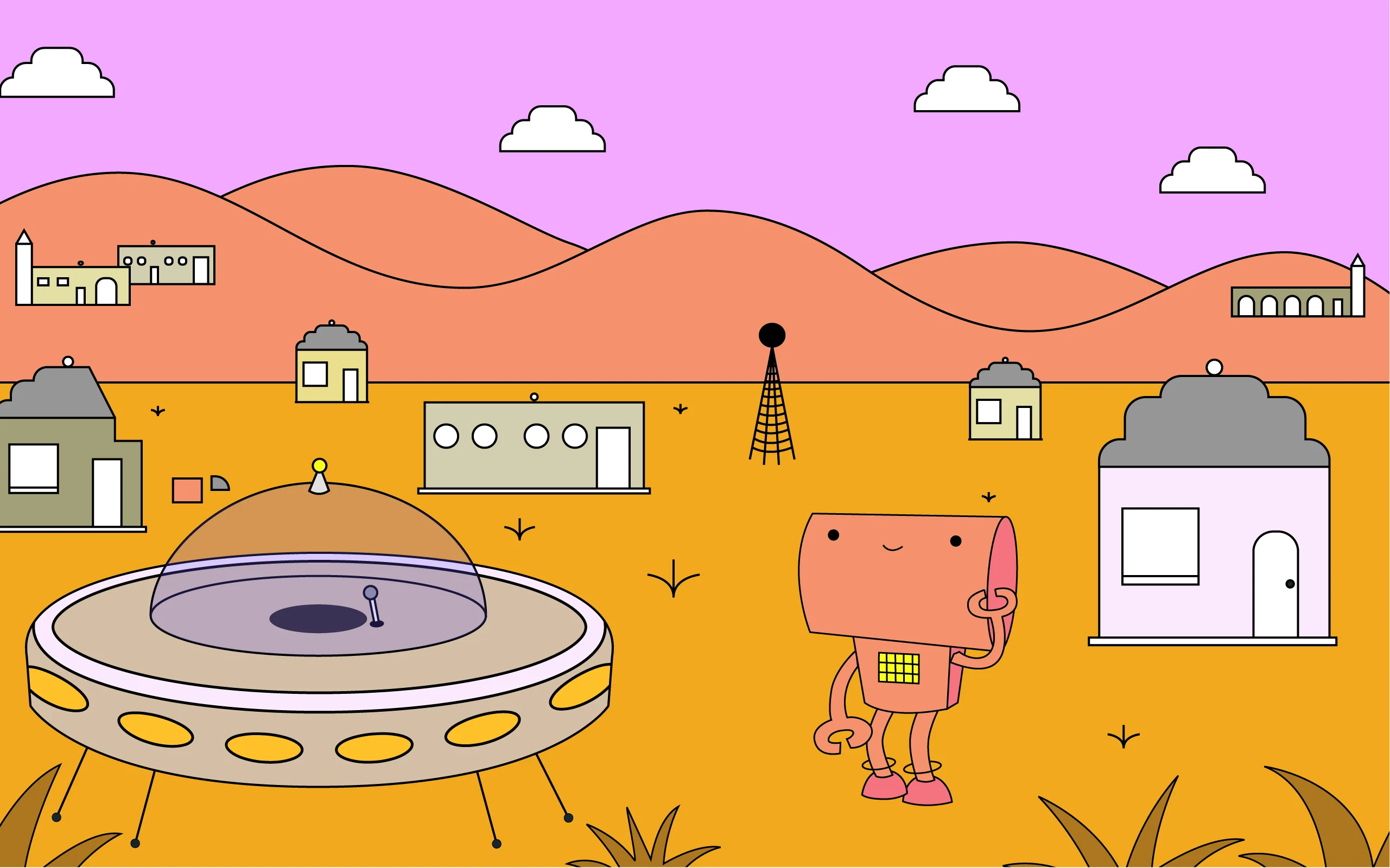
How did a series of pop-up garage healthcare clinics in Lebanon in 2013 eventually led to a team of Syrian refugee children called Team Hope winning first prize at the world’s most prestigious robotics competition? Inspired by their experiences, Robogee – a storytelling platform amplifying the true capabilities and curiosities of refugees – was created. Writer and producer Phoebe West tells this totally remarkable, Hollywood-blockbuster-esque story.
Paper by WeTransfer is the immersive sketching app for capturing ideas anywhere. We’ve launched a Paper Journal in support of Robogee’s story, where you can follow along and add color to her journey. Download the Paper app and get the journal today.
It all started when trained neurosurgeon Dr Fadi Alhalabi came to Lebanon from Syria in 2013. He was struck by the lack of access to healthcare for Syrian, Lebanese and Palestinian residents in the Bekaa Valley. He began to set up clinics outside of garages in the area which became Multi-Aid Programs (or MAPs), a refugee-led NGO then working to establish accessible health centers. It was through these that Dr Fadi became aware of the barriers preventing young Syrian refugees accessing education, and so MAPs started to develop schools inside the camps where they lived. “Everything that developed was like, ‘here’s a gap, let's create this!’ in a very organic way, but working with the community as opposed to just coming in and saying ‘we’re going to do this,’” explains Natalie Garland, their partnerships and research manager speaking from her home in Lebanon. “It was a refugee organisation, by refugees, for refugees.”
Dr Fadi had the idea of teaching robotics and STEM education to students as an indirect psychosocial support activity. He wanted to try something different which would hopefully allow space for responses to traumatized kids away from Western ideas of therapy and thought robotics could work. “There’s the team component, the routine component, and through learning something really challenging, the idea is that you build self-confidence and in building self-confidence you build stronger interpersonal skills and that is a way of targeting PTSD,” Natalie says of Dr Fadi, “and by the way…this man is a rock star.”


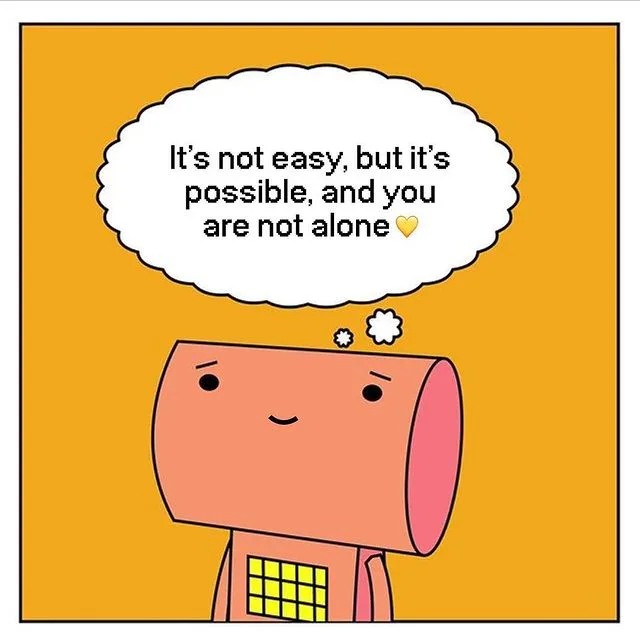
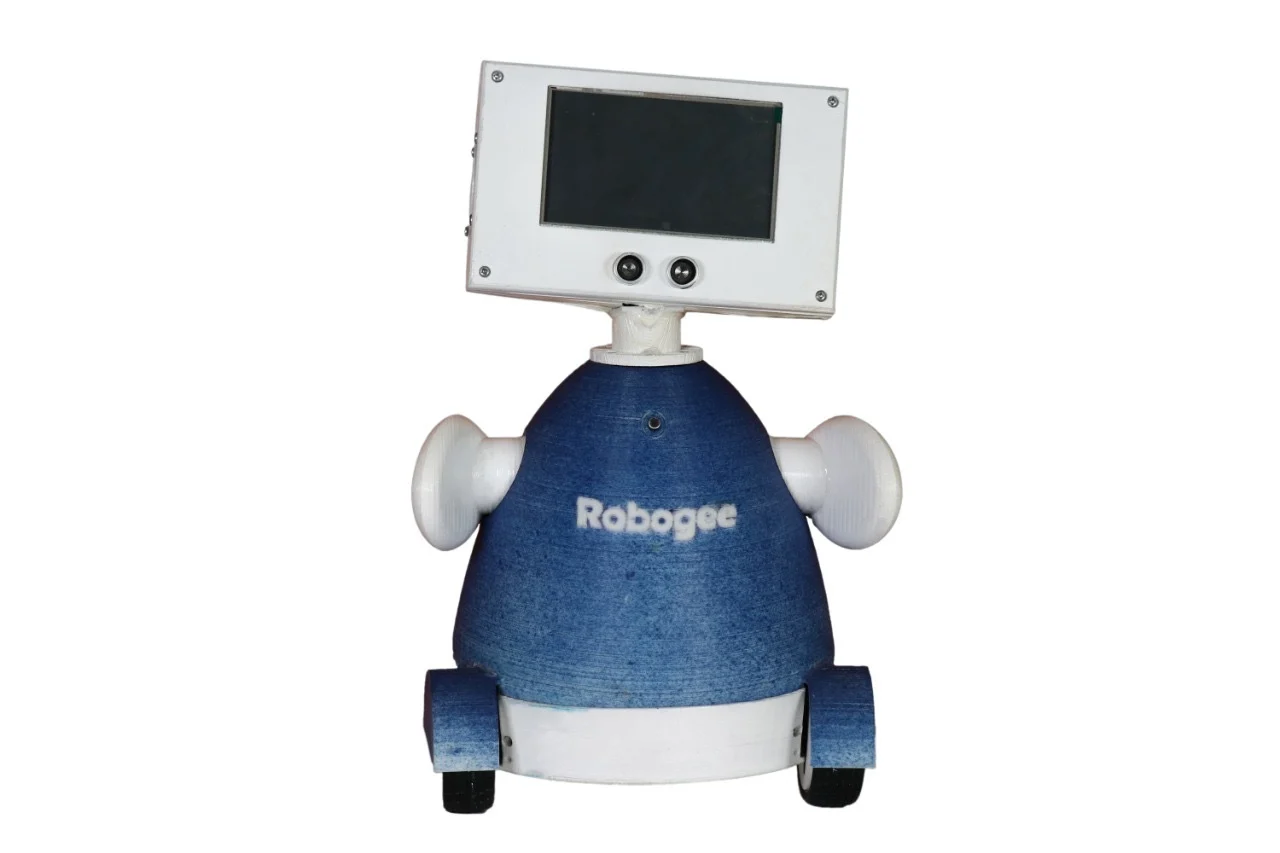
And so begins the tale of Team Hope. A true story that mirrors the creeping exaltation of an underdog success story in a Hollywood blockbuster.
Trusting the potential of robotics as a way of targeting the mental health of adolescents, but without funding, Dr Fadi reached out to engineers and friends from Syria with experience in the field. Together they built up a program as a sort of experiment to see what would happen. It was launched by MAPs as a series of science clubs which they hoped would attract kids from the camps. They did, and in April 2016, Dr Fadi had the idea to enter a small team into a robotics competition at the American University of Beirut. He wanted their presence to mean something, he explains, beyond high level programming or design. “We needed from this team something deeply related to our community,” he says. Their name was Hope of Syria (which would later become Team Hope, a change to include refugees from all over the world) and they brought with them a mascot called “Robogee,” the robot refugee.
The competition is prestigious, and it was clear nobody thought the Hope of Syria team would win. They had never learnt robotics or entered a contest, and had already exceeded expectations in the eyes of many. “But they did!” Natalie laughs, “you can’t even make this up!” After that, Team Hope went on to win over 60 international and national competitions, transforming Robogee into an initiative, a curriculum and a powerful emblem of hope.



As it traveled the world, Robogee began to morph into something bigger, inspiring children to realise their own potential and capabilities, working like MAPs to change the narrative from within the community. “It’s a way of saying, ‘hey refugee community, you are capable, you are worthy, you are smart and we’re going to give you opportunity...whatever your dream is, you can achieve it.,” says Natalie. “Robogee proves what is capable when we provide our students and kids with the highest quality learning opportunities.”
The First Global Challenge took place last year in Dubai – the world’s biggest artificial intelligence championship, in which every single country is represented by a single team. Team Hope, the only team of refugees, entered as a country in their own right and beat 193 others to come first. “First, first, first place!” laughs Natalie holding her arm up to show the hairs standing on end. “When we were watching we were all just crying...we were freaking out” she remembers, “I could cry now talking about it.”
Speaking to her it is difficult to imagine a better high: watching the final between Germany, Switzerland and Team Hope; rooms full of people in Syria, crowded around televisions holding their breath before erupting into noises of pride and joy, awaiting the return of the team who are now heroes among their communities – young engineers and activists all at once. Beyond exceptional skill, this team represents something bigger. “They inspire their friends, inspire their communities, inspire their families and are ambassadors for refugee education,” explains Fadi warmly.
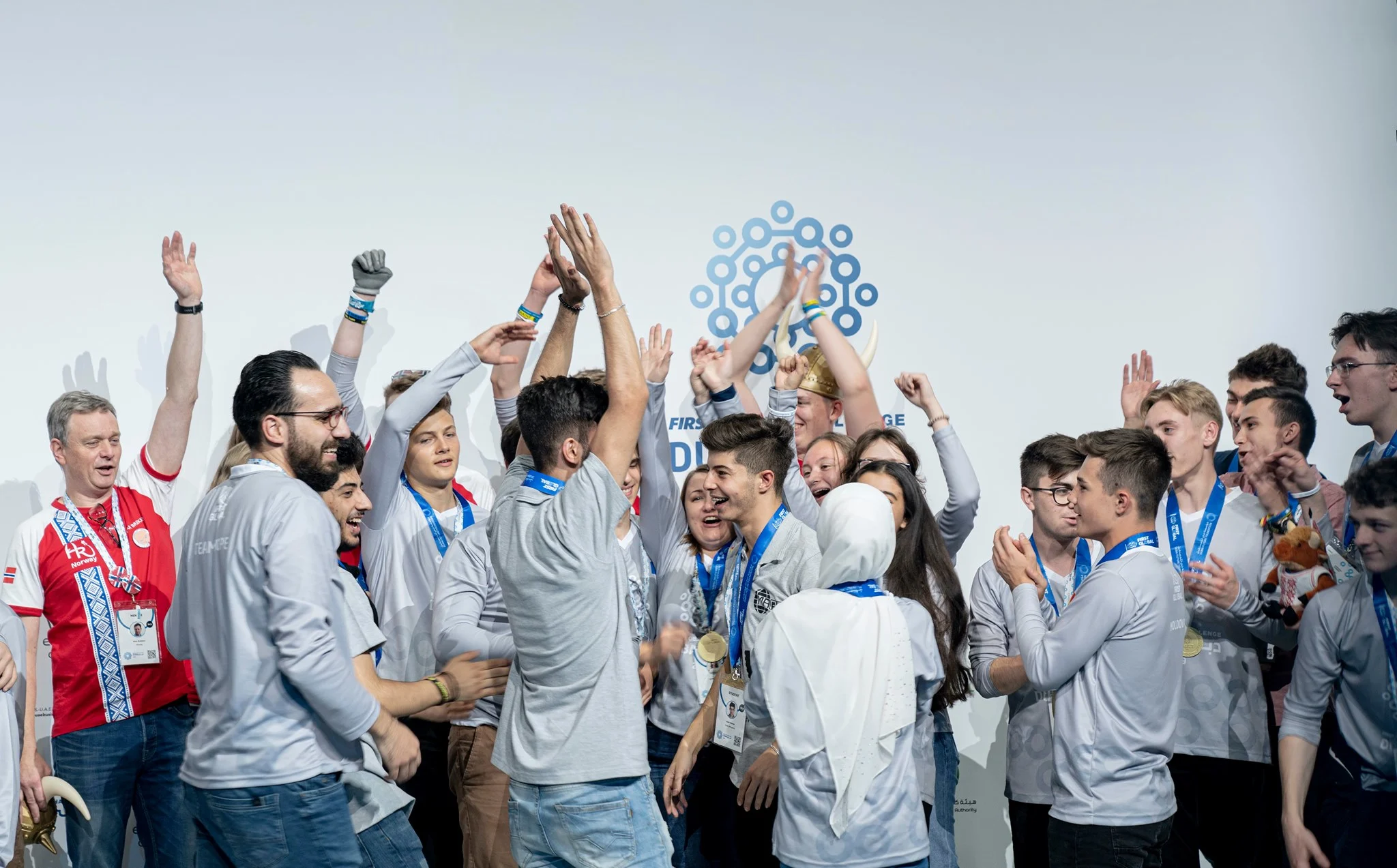
The team currently comprises around 200 kids, of which smaller groups of five or six travel to compete in robotics tournaments around the world. Traveling internationally is not easy for refugees; obtaining visas and passports can be complicated and it is not always clear how smooth their journey will be. While they don’t compete en masse, the team feel part of a shared adventure in spite of geography. “This award is a victory for every refugee who has suffered from brokenness” explains 16-year-old Team Hope Member Ghassan Khubbieh in Lebanon.
The robotics trainers and coaches are young Syrians too. Yamen Najjar, MAPs’ program manager, was the coach of the team in Dubai and remembers the moment they won, now a defining one in his life. On his way back to Lebanon though, navigating news interviews through the airport and soaking it all in, he was detained and refused entry. After a week in limbo and with help from UNHCR and Human Rights Watch he was allowed to return, his reality as a refugee intact. “What happened at the airport reminded me that the refugees' difficulties are endless,” he says. “A refugee has to keep moving and not lose hope,” for him the message of Team Hope was that “being a refugee is the opposite of insult, it is a badge of strength.”
It was this message and the team’s achievement that led to the creation of Robogee. The aim was to tell previously-unheard refugee stories and communicate them in a way that spoke to children and adults alike – inspiring kids, challenging perceptions and breaking down damaging stereotypes in the process. “We want to take this narrative that is crafted by the refugees and share it with the rest of the world,” explains Natalie. To do that, MAPs have partnered with Dutch creative agency We Are Pi to create Robogee: the world’s first refugee hero. Forced to leave her planet when danger strikes, this curious and smart young robot travels through the universe encountering worlds directly inspired by the real, personal stories of each member of Team Hope.
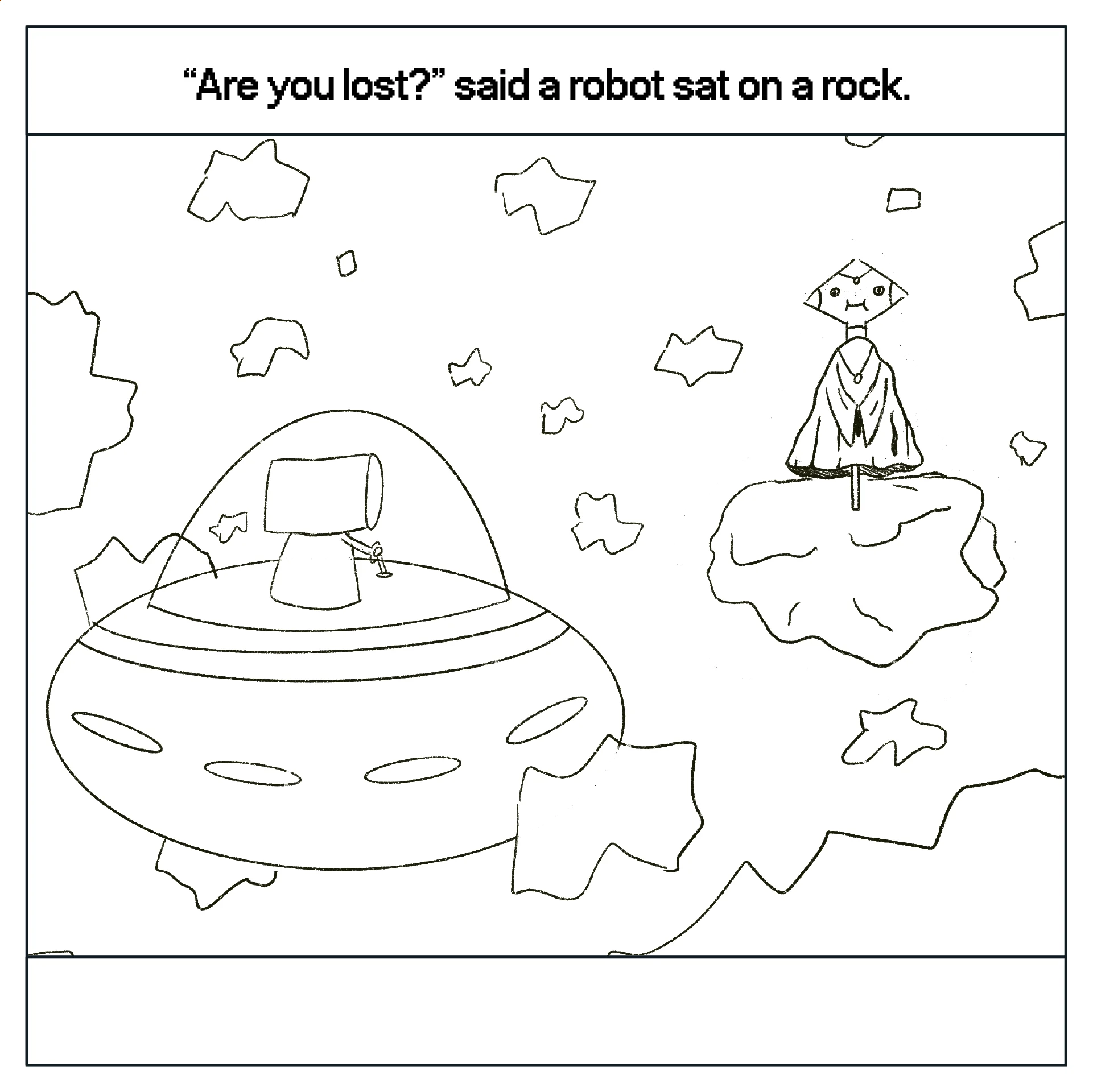


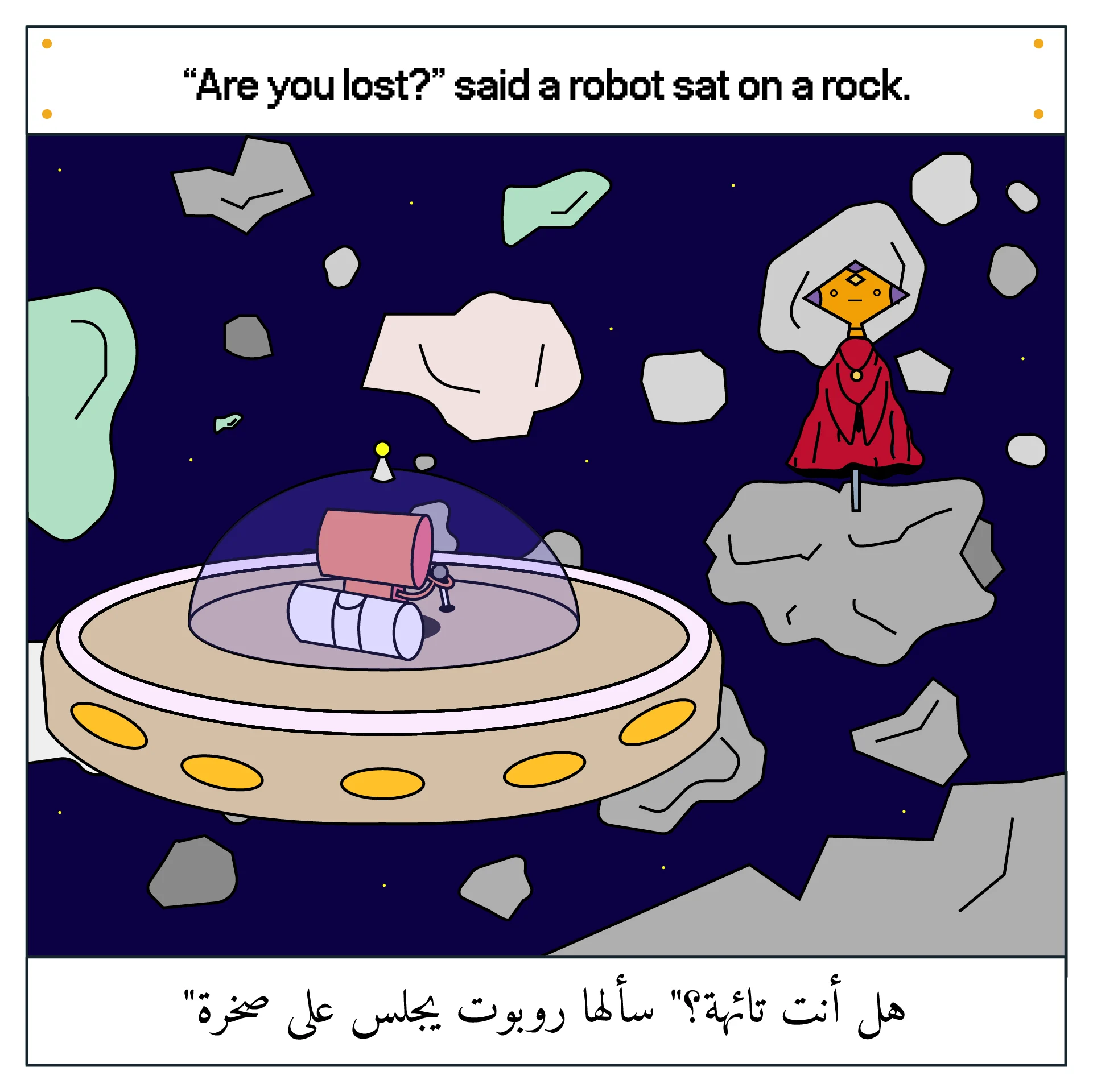


Just as MAPs and Team Hope were borne of organic answers to problems, Robogee has unfolded in a similar way. Each part of the process is rooted in relationships and dialogue, which make space for authenticity and the whole spectrum of experience they’re working to translate and engage with. Rather than try to tell “the refugee story,” Robogee is amplifying the distinct stories of individuals and using their experiences to create fantastical landscapes. The first step is to listen to the stories of the kids, making sure they’re heard in a place and way which is comfortable for them. Their narratives are transcribed and passed onto the team at We are Pi who then “pore over that material and try to find what's at the heart of that child's story and come up with a world that would bring it to life,” explains Mark Lester (head of strategy at We Are Pi). It is their memories which directly shape the events taking place within the worlds too, and each high and low encountered by Robogee.
“One of the things we said right from the start was to commit to the honesty of the trauma of the experiences, but to put it in a tone that was easy for kids to digest...The advantage of an allegorical kids character is that it leaves space for your imagination and allows you to project your own experiences into these broader themes,” he says: “It removes some of the white noise of cultural difference and instead allows you to pick into some of the more fundamental elements of human experience.” Such fundamental elements run through Robogee’s journeys like seams as she encounters different obstacles, teaching lessons of “self-belief, courage, belonging, appreciation, responsibility and hope” explains We Are Pi strategist Paris Bethel - core themes landed on by Team Hope, as valuable and relatable pause points for those reading, refugee or not.

It is easy to look at Robogee and think she is inspired by the robot made by Team Hope, but really, she is inspired by the children that created it. Currently you can find her on Instagram and soon elsewhere in weekly comic strips which follow her trajectory across the galaxy, supported by daily content delving deeper into her adventures and the real-life journeys which inspired them. Robogee’s world is full of color and expression. “I wanted the illustrations to be engaging, fun and clean,” explains her illustrator Nick Fatouris, remembering how he brought her character to life. “We were doing something we felt was different and I wanted her to look unique,” he says. “I also wanted her to be fun and joyful, so she can embody Team Hope’s spirit.”
Robogee is also being brought alive by the Crochet Community Collective. Started by MAPs in the summer of 2019, they are a network of 50 Syrian refugee and low-income Lebanese women who have crocheted 12,000 dolls in the months since. It was through the sales of their octopus toys that Team Hope made it to Dubai to compete in the First Global Challenge. In the absence of funding or donors, the CCC became their sponsors and made the journey possible. Aside from the income which it provides to each of them, the art of crochet has served as a lifeline for these women – forming social ties within marginalized communities and quiet relief from the anxiety and stress that many of them feel on a daily basis. Their creations are beautiful and hilarious, imbued with the contagious joy that seems to seep through every aspect of this expanding, web-like project.



